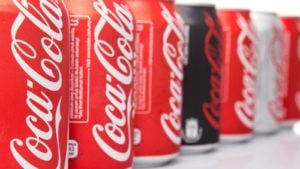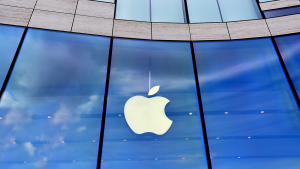
Creating long-term wealth in the stock market is fundamentally simple: Pick a time-tested strategy, stick to it, sell your losers and ride out the winners, be patient and keep investing. It sounds relatively simple and it is but the question of which long haul stocks are likely to create wealth still arises.
History has shown again and again that identifying sure winners is not as easy as it appears. Simply consider the stocks of companies that dominated several decades ago that no longer exist or are nearly bankrupt. Radio shack comes to mind, and retailers like Kmart also deserve a mention.
The point is that the brands and stocks that appear to be long-term winners sometimes turn out not to be. That makes establishing a long-term position difficult when times get tough. Just remember, do your research and stick to your plan. Long-term wealth doesn’t come from abandoning a plan when things get dicey. Then you’re trying to time the market which rarely works.
Microsoft (MSFT)

Microsoft (NASDAQ:MSFT) is one of the best tech stocks to consider in the quest to build wealth for the long haul.
Of course, we can simply look back at its performance over the past 10 years and use that to suggest that it will continue to win. It has returned an average of nearly 29% over the past decade so it’s hard to argue against Microsoft. It has returned an even more impressive 36% over the past 12 months.
That increased rate of return is an obvious product of Microsoft’s strength in relation to artificial intelligence. The company invested early and heavily into AI and has reaped the benefits. Those benefits appear especially in Microsoft’s cloud division, Azure, where growth has outpaced top line results.
That’s the overarching point here, and the reason investors should look to Microsoft as a long haul stock to create long-term wealth: Microsoft was already a behemoth and got that much more powerful as a result of the early AI surge.
Coca-Cola (KO)

Coca-Cola (NYSE:KO) has long been recognized as a long-term stock worthy of investment. However, I believe some investors may have begun to question the validity of that assertion as global tastes shift.
What I’m referring to specifically is the shift away from sugary, carbonated beverages toward healthier alternatives. Sugar is more demonized than it has ever been. In turn, Coca-Cola should logically be at risk.
However, the company isn’t at risk and that truth is borne out through a few simple metrics. If Coca-Cola were in trouble it would show in the company’s gross margins. The company wouldn’t be as capable of charging higher prices if demand were worsening and that would show up as weaker margins.
However, Coca-Cola’s gross margins are just about exactly where they’ve been for the past 10 years. Much higher than the majority of competitors and very steady overall. Coca-Cola is one of a few buy and hold stocks that will cause no heartache and continuously reward through dividend income. It’s as easy a choice as ever.
Realty Income (O)

Realty Income (NYSE:O) satisfies one of the oldest maxims of investing: Dividends reinvested create long-term, compounding wealth that rich stock investors love.
This recent article spells out an exact scenario in which O stock is held over the last 10 years. It lays out the returns under a dividend reinvestment plan and one on which dividends are collected as cash. Unsurprisingly, the dividend reinvestment plan yields greater returns overall. Yet, the returns while collecting cash are also strong.
I’d recommend following the dividend reinvestment plan especially given the fact that O stock pays a monthly dividend that increases the frequency of compounding opportunities. However, that cash in hand can be used to seek other long-term wealth building opportunities as well.
The company continues to thrive and recently raised its earnings and investment guidance. Adjusted funds from operations (AFFO) was increased as well. That’s where dividends are paid from in real estate investment trusts (REITs) including Realty Income. It all continues to look very strong for the company as an investment.
Apple (AAPL)

Apple (NASDAQ:AAPL) is a 10X stock. That’s true of the shares of the last decade during which it has provided average annual returns of 26.4%. That means that $1,000 invested in Apple a decade ago is now worth more than $10,000.
We aren’t living in the past though and the markets are forever forward looking. Until very recently, those markets were not particularly fond of Apple and its stock. That changed when Apple delivered good news at the annual Worldwide Developers Conference (WWDC).
The company unveiled its much anticipated take on AI, Apple Intelligence. Apple Intelligence will be more pragmatic and geared toward user experience primarily. That is in opposition to other tech firms where a land grab approach has dominated early on.
The addition of AI to the iPhone is particularly important to Apple and its stock. It is expected that updated, AI capable iPhones will revive slumping sales of late. Even if AI doesn’t spike iPhone sales immediately, they will return as the economy improves on rate cuts later this year. Apple has proven to be a winner for the long haul through its ability to create products that have mass appeal and create a cult like following.
Exxon Mobil (XOM)

There are dozens of things to potentially talk about in relation to Exxon Mobil (NYSE:XOM) stock and its long-term outlook. Let’s focus on its strength versus other U.S. Oil Majors and how the company is approaching the energy transition. Both of those factors, when combined, suggest that Exxon Mobil is an excellent long-term wealth building investment.
Most energy investors are going to go one of two ways when it comes to overall strategy: They’ll invest in green-leaning European energy firms or side with fossil fuel dominated American firms. Those who find more appeal in the latter category will likely whittle their choice down to Exxon Mobil and Chevron (NYSE:CVX). I’d suggest choosing XOM because the company is far better at investing capital than its competitor. That ability to reap a higher return on invested capital than cost is referred to as ‘value creation’. Exxon Mobil excels in that regard.
That suggests to me that Exxon Mobil is particularly adept at reading market trends over time and investing appropriately. I can only imagine that the company will be better than its competition as it relates to directing capital during the energy transition as well.
Philip Morris (PM)

Philip Morris (NYSE:PM) is the best-positioned of the major tobacco stocks for the next 10 years. For that reason, I believe it’s also the best choice to deliver long-term wealth to investors.
All of the major tobacco stocks are undergoing a massive, transitory period during which cigarette smoking has fallen and these companies have been forced to pivot.
However, it is Philip Morris that has handled the transition best. Over the past five years its share prices are up 32%. That’s not great when compared to the broader market but it is much better than Altria (NYSE:MO) and British American Tobacco (NYSE:BTI), both of which have fallen during the same period.
Philip Morris has introduced products that meet changing consumer demand profiles including the incredibly popular Zyn nicotine pouches. The company can’t even keep up with demand for the product.
That’s part of the broader narrative suggesting that Philip Morris is a great buy and hold stock. It provides a strong dividend and is managing the tobacco transition very well.
McDonald’s (MCD)

McDonald’s (NYSE:MCD) stock has certainly been much stronger in the past. The company is facing issues from multiple angles and currently trades for less than $260 per share after beginning 2024 at $297.
Whether it’s boycotts related to the Middle East or claims of rampant price gouging, McDonald’s has certainly seen better days. McDonald’s doesn’t expect the effects of those boycotts to worsen demand further but also expects no improvement until the war ends. Some believe the war to be unwinnable and that a peace accord could soon materialize as a result.
McDonald’s also recently released its popular $5 value meal that includes a McDouble or a McChicken, a four piece nugget, small fries, and a small drink. The company is running the promotion in response to claims that it had gotten too expensive during the ongoing inflationary period. Its release should spike sales and are expected to produce profits at the same time.
Those factors suggest McDonald’s should rebound in the short term. It still plans to grow rapidly in the near future and the company wants to reach 50,000 global locations by 2027. If McDonald’s achieves that goal it will be the fastest period of expansion in company history.
On the date of publication, Alex Sirois did not have (either directly or indirectly) any positions in the securities mentioned in this article. The opinions expressed in this article are those of the writer, subject to the InvestorPlace.com Publishing Guidelines.
On the date of publication, the responsible editor did not have (either directly or indirectly) any positions in the securities mentioned in this article.




